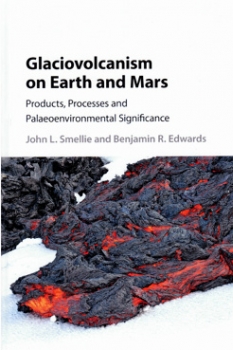The study of ‘volcano-ice interactions’, or glaciovolcanism, has not historically been high on the list of those into space and astronomy, but interest has increased as our spacecraft have discovered more about the strange morphologies of some of the major moons of the outer solar system. In fact, this book’s preface boasts that it’s ‘the first monograph on glaciovolcanism to be published’. As such, it is aimed primarily at academic researchers and postgraduate students; however, as it is largely non-mathematical, it should be understandable by anyone with an abiding interest in the subject.
As a reflection of how planetary scientists learn their skills, it is predominantly a book about Earth but a substantial chapter on ‘Glaciovolcanism on Mars’ and a final one on ‘outstanding challenges and possibilities’ extend coverage into the solar system. There is also a significant glossary, a large reference section and a good index. The volume is illustrated throughout with monochrome photos and diagrams, and there is a colour photo insert.
Its 17 chapters cover the distribution of glaciovolcanism, historical observations of eruptions, physical and chemical properties, and an increasingly detailed analysis of the terminology, morphologies and sequences. The questions posed by the subsections range from ‘How can waxing and waning of glaciers and ice sheets affect volcanism?’ to ‘Pillow sheets: fact or fiction?’ (you decide!).
Clearly, text books are not everyone’s choice of bedtime reading, but the authors’ preface contains a nice analogy that is worth sharing, not least because of its wide applicability to science and learning: ‘the study of glaciovolcanism, like all scientific research, is like standing before a building facing a locked door. You unlock the first door and there is another, then another. The doors never end, but you are further into the building. This book is the key to the first few doors. What you do and where you go in the building after that is up to you’.
Mark Williamson











